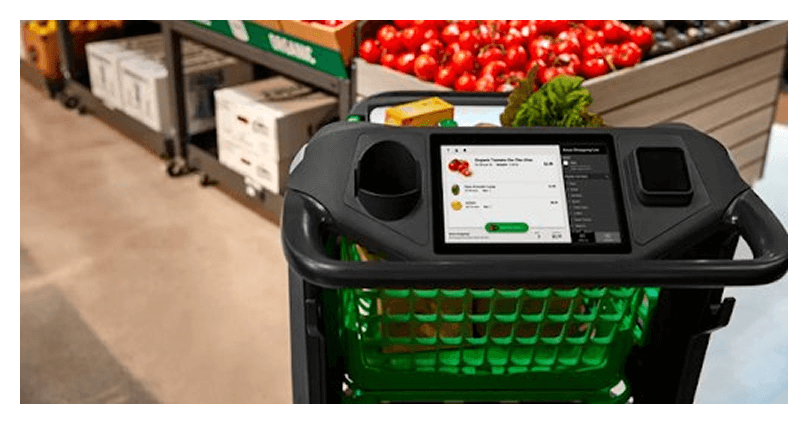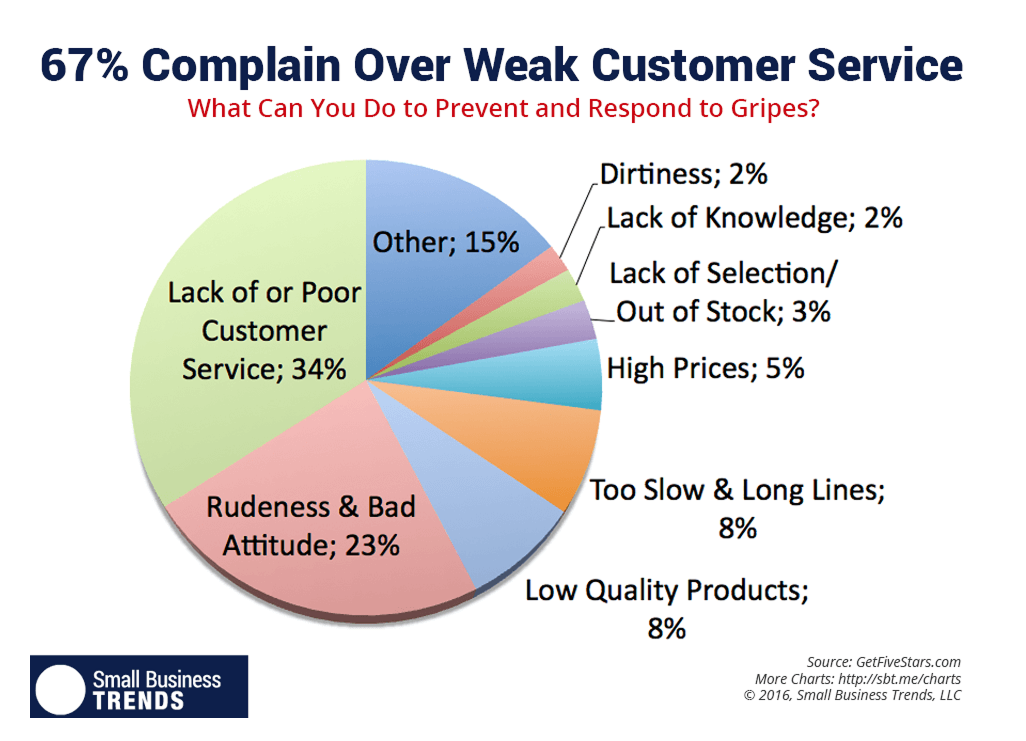Have you ever tried shooting a 3-pointer in a basketball game, that too, at the last minute while everyone is counting on you? Now, imagine doing the same while riding a bicycle with your eyes closed. Sounds impossible, right?
That’s exactly what running a retail business feels like—high stakes, constant pressure, and no room for mistakes. Having spent years in the retail space, I’ve seen firsthand how retail customer service can make or break a business. Every day is unpredictable, filled with demanding customers, operational hiccups, and the constant challenge of staying ahead of competitors.
One moment, a customer is asking about a product you’re unsure of, and the next, another is fuming over a minor shipping delay. Meanwhile, hundreds of shoppers are discussing your brand on social media—some praising, others complaining.
So, how do you turn this chaos into an opportunity to stand out? The answer lies in being proactive, understanding customer pain points, and leveraging customer service software to track and resolve issues efficiently. But that’s just the beginning.
In this blog, I’ll break down the importance of retail customer service and share practical, experience-backed tips—along with real-life examples—to help you create a service experience that keeps customers coming back. Let’s dive in.
What Is Retail Customer Service?
Retail customer service refers to the process of providing seamless assistance to customers- before, during, and after they purchase from your offline store or online website. Just like any other customer service practice, the end goal of retail customer service is to meet customer needs in a timely and efficient manner, leading to delightful experiences.
Now, it is important to note that the word ‘retail’ is often confused with ‘offline stores’. However, retail simply refers to the act of selling goods or services to consumers and encompasses both online and offline channels.
So, whether you run a brick-and-mortar store or accept orders only via your e-commerce website, this blog will help you understand the nitty-gritty of retail customer service.
What Is the Importance of Retail Customer Service?
Retail businesses around the world thrive on one important thing, and that is delightful customer service.
According to Bain, companies that excel in customer service drive revenues 4% to 8% higher than their peers.
While factors such as product price, availability, features, and design have always been important for a customer, the experience you offer is extremely powerful and can help them choose you over competitors, again and again.
Here are more reasons that highlight the importance of great retail customer service:
- Enables you to assist customers in a proactive manner
- Helps you understand customer pain points and challenges
- Increases the amount of money each customer spends with your business
- Generates positive word-of-mouth about your retail business
Now that we know how important customer service can be for retailers let us explore some best practices and tips.
How an Effective Retail Customer Service Strategy Sets You Apart From Competitors
In a crowded retail market, great products alone aren’t enough to keep customers coming back. What really makes a difference? The way you treat your customers. A strong customer service strategy doesn’t just improve satisfaction—it gives you a competitive edge that keeps your brand top of mind.
1. Builds Customer Loyalty
People remember how they’re treated. If you go the extra mile—whether it’s offering personalized recommendations, resolving issues quickly, or simply greeting customers warmly—they’re more likely to return. Happy customers also turn into brand advocates, recommending your store to friends and family.
2. Enhances the Shopping Experience
Great service makes shopping effortless. Whether it’s helping customers find what they need, offering easy returns, or making checkout smooth, a well-thought-out approach creates a seamless experience. The easier you make it for customers, the more they’ll prefer shopping with you over competitors.
3. Increases Sales & Revenue
Good service doesn’t just make people happy—it boosts sales too. A helpful associate who understands what a customer is looking for can upsell or cross-sell without feeling pushy. When customers feel valued, they’re more likely to make repeat purchases.
4. Differentiates You from Competitors
Many businesses sell similar products, but not all deliver the same level of service. Customer service in retail stores can be a key differentiator, helping you stand out in a competitive market. If your team is more attentive, knowledgeable, and friendly than others, shoppers will choose you over the competition.
5. Builds a Strong Brand Reputation
In the age of online reviews and social media, customer experiences spread fast. A single positive interaction can lead to glowing reviews, while a bad one can do lasting damage. Consistently delivering great service strengthens your brand’s reputation, attracting new customers and keeping existing ones loyal.
Key Skills Needed for Stellar Retail Customer Service
Great customer service can turn a one-time shopper into a loyal customer. Whether you’re assisting in-store or online, having the right skills makes all the difference. Here are the key skills every retail employee should master to deliver outstanding service.
- Communication Skills: Clear and friendly communication helps customers feel heard and valued. Whether answering questions or explaining product details, the way you speak matters just as much as what you say.
- Active Listening: Customers appreciate when you truly listen. Pay attention to their needs, ask follow-up questions, and avoid interrupting. This helps in recommending the right products and solving their problems effectively.
- Patience & Empathy: Not every customer interaction is easy. Some shoppers may be confused, frustrated, or in a hurry. Staying patient and understanding their perspective can turn a tough situation into a positive experience.
- Product Knowledge: A great retail employee knows their products inside out. The more you know, the easier it is to make helpful recommendations and build trust with customers.
- Problem-Solving Abilities: Issues will arise—whether it’s a return, a pricing error, or a complaint. Being able to think quickly and offer solutions keeps customers happy and avoids unnecessary frustration.
- Adaptability: Retail environments change fast. From handling multiple customers at once to adjusting to new promotions, staying flexible helps you provide top-notch service at all times.
- Positive Attitude: A smile and a friendly demeanor go a long way in making customers feel welcome. A positive attitude can set the tone for the entire shopping experience.
- Time Management: Balancing multiple tasks while ensuring every customer gets attention is key in retail. Prioritizing tasks efficiently helps in delivering smooth and efficient service.
Mastering these skills can elevate customer service in retail stores, creating a better experience for both customers and employees. Strong service not only boosts sales but also builds lasting customer relationships.
10 Best Ways to Improve Customer Service in the Retail Industry
In order to delight your customers, there is no need to reinvent the wheel. Here are 10 recurring tips that all of the best retail support departments have in common. Let’s explore them:
1. Nothing Beats a ‘Genuine’ Smile 🙂
Nobody likes being greeted by a grumpy, sad representative who seems to hate every second of his job. On the contrary, a genuine smile can be infectious and put the customer in a good mood right from the start.
According to a report by Harris Interactive, friendly customer service representatives encourage 73% of customers to stick with a brand. Encourage your employees to greet customers with a smile and a warm “Hello”. The driving force behind this should not be because your business wants to make more money but because it’s a common courtesy we show to anyone who visits our house or store.
In case you are engaging with customers via SMS, social media, or a chat window, use positive emoticons to keep the conversation light and happy.
2. Get Proactive
In retail customer service, getting proactive simply means taking all necessary steps to help your customers resolve issues before they even occur. Before your customers run into a problem, you anticipate their problems and try to eliminate them altogether or reduce their impact.
For instance, if you run a brick-and-mortar store, there might be days when your store is closed due to holidays, maintenance work, or any other reason. You can act proactively in this situation, and update your customers about the changes in business hours/days. So, even if customers go past your store, they will not be surprised to see the ‘Closed’ sign.
Another tip would be to create a dedicated knowledge base, full of FAQs and guides, that helps customers resolve their basic issues themselves. This will help your business reduce the support ticket volume and subsequent costs related to handling customers over call or chat.
To learn more about how a knowledge base can enhance your customer service, check out this quick video:
3. Resolve Issues Faster with AI Help Desk Software
Speed is everything in retail customer service. Shoppers expect quick resolutions, whether they’re inquiring about an order, reporting a payment issue, or requesting a refund. That’s where an AI-powered help desk makes all the difference.
With AI-help desk features like automated ticket summaries, response suggestions, and intent detection, your team can instantly understand customer issues and provide accurate solutions. AI can also analyze past interactions to suggest the best course of action, reducing response time and ensuring consistency.
Additionally, AI chatbots can handle common queries round the clock, allowing human agents to focus on complex issues. By integrating AI into your help desk, you can resolve retail queries faster, improve response accuracy, and enhance the overall shopping experience.
Want to see AI help desk features and capabilities in action? Watch this short video:
4. Establish Procedures for Dealing with Difficult Situations
If you have been a part of the customer service industry, you will know very well that a challenging situation can come in any form- a frustrated customer, a mistake by any employee that can have serious consequences, or things that are simply not in your control.
Here are some tips to steer clear of such situations:
- Establish a standard escalation process where your employees know who to approach in case a customer case demands expert assistance or managerial intervention.
- Train your agents to handle difficult customers with utmost patience and empathy. Ensure their training programs include lessons on key customer service skills.
- Prepare an incident management strategy to help employees know what to do if a transaction turns really bad. Empower them to initiate small returns or refunds by themselves.
- For situations that are not in your control (such as late delivery due to heavy rainfall) keep all your customers well-updated in advance. Don’t wait for them to contact you, and apologize for the inconvenience.
5. Avoid Making Promises You Can’t Keep
Most businesses fall into the trap of making false promises to woo customers. While this is a great way to get consumer attention at the start, eventually, customers will figure out the reality and never return.
On the contrary, being honest and upfront about what your business is capable of delivering can go a long way in fostering a strong relationship. Whether you are designing your new business website or simply a product flyer, give attention to every single detail. Displaying a feature list that your product simply doesn’t offer can make customers lose their faith in your brand.
Make your employees understand that honesty is a recurrent practice. Being transparent in the workplace will help everyone create the right culture and win the trust of customers.
6. Practice Clear Communication
When customers contact your business, they want an engaging conversation but they also want you to value their time. Therefore, ask your agents to keep every customer service communication fairly precise and relevant, whether it is verbal or written.
During face-to-face interactions, agents must try to understand body language cues to figure out if a customer is looking for help or is in a hurry. On the other hand, you can use customer email management software to keep emails short and to the point so that customers can be notified even when they are running out of time.
If your business is into selling gadgets or electronics, it is important to remember that not all customers are technical experts. Therefore, explain product features in the simplest way possible without using heavy terms or technical jargon.
Clear communication is at the heart of great customer service. If you want to improve the way you interact with customers, check out this blog on How to Communicate With Customers Effectively
7. Personalize the In-Store Retail Experience
Delivering an in-store personalized experience is an effective way to drive foot traffic and boost in-store sales.
To make the most of retail personalization in your stores, you can use the following tips:
- Capture customer data: Keep a tab on relevant information such as customer purchase history, social media handles, birthdays, anniversaries, and other important milestones.
- Adopt an omnichannel approach: Merge your online and offline data so customers can get a similar personalized experience no matter where they shop.
- Make customized offers: share customized offers with your customers in the form of discounts, promotions, affiliation programs, and more.
- Encourage employees to make personalized recommendations: No matter if a customer buys from your physical store or online shop, employees can always recommend products or services based on customer interests and preferences.
Personalization isn’t just limited to in-store interactions—it also plays a crucial role in customer support.
Learn how a help desk ticketing system can enhance personalized customer service in this blog: How to Offer Personalized Customer Service Using a Help Desk Ticketing System.
8. Share Periodic Surveys
The purpose of any retail business is to meet customer needs. But how will you know what your customers need and desire if you don’t ask them?
Offline retailers can practice the old-school strategy of asking customers to fill out a short survey on a piece of paper. It really does work sometimes. You will be surprised to see customers draw out hearts or smileys when they have had a positive experience.
You can even print a survey dynamic QR code on checkout receipts to enable customers to share their candid feedback. For online sellers, survey links can be shared easily via email using an email ticketing system, chat, or you can even directly embed a small survey on your e-commerce website.
9. Make Sure Your Retail Store has a Break Room
When we talk about offline or retailer customer service, representatives are on their feet for hours at a stretch. This can be extremely exhausting and might hamper their productivity.
So, how do you ensure your employees get the break they deserve?
Provide them with a ‘break room’ where they can truly relax and feel comfortable. Small changes like providing comfortable chairs, bean bags, snacks, etc., will re-energize your employees even when they are having a rough day at work. Remember, happy service employees lead to happier customers.
10. Improve the Checkout Experience
The checkout experience can be the difference between a customer who buys your products and a customer who abandons the cart and leaves your retail or online store. Long wait times and an unpleasant checkout experience can leave customers confused and prevent them from buying from your brand again.
Here are some retail customer service tips you can adopt to improve the checkout experience:
How to improve the online retail checkout experience
- Supply complete information about shipping and delivery
- Remove distractions in the form of complementary products or website header/footer
- Offer multiple payment gateway options including digital wallets
How to improve the offline retail checkout experience
- Enable mobile and contactless payments
- Use clear and simple in-store signage to direct customers to the right billing counters
- Keep separate checkout aisles for those with small purchases (below 5 items)
Examples of Retail Customer Service
The business world is full of outstanding and inspirational gestures that brands have made for individual customers or their target audience. Here are some solid retail customer service examples that will restore your belief in exceptional service.
Amazon’s Dash Cart Revolutionizes the In-store Checkout Experience

Amazon introduced its smart shopping cart called Dash Cart which makes a grocery trip even quicker by allowing customers to skip the checkout line.
The cart uses a combination of an Android screen and a sensor fusion to identify items you put in the cart. When you exit through the retail store’s lane, sensors automatically identify the cart value, and the payment is reflected on your credit card linked to your Amazon account.
Now, this is indeed an innovative measure to make the checkout experience as frictionless as possible. Customers don’t have to ask silly questions to customer service reps, such as the price of a product, or stand in a long queue while checking out. Amazon understands well that the true essence of retail customer service lies in making your customers’ lives easier.
Starbucks Personalizes Every Customer Interaction

It is rare for an individual to visit a Starbucks store and leave without a memorable experience. The popular coffeehouse chain makes customers feel special by remembering their names and their orders to which customers react well. No wonder the average Starbucks customer visits their store 6 times every month.
Starbucks does not stop there. It is continuously incorporating customer feedback to shuffle its coffee range and dessert offerings. A great example would be the Pumpkin Spice Latte, which was born from customer demand and since then has created a lot of buzz among coffee enthusiasts.
Zappos Employees Are Ready to Go the Extra Mile

Zappos, the popular online shoe retailer, is known for its astounding employee and customer service culture. While many organizations push their employees to reduce metrics such as the Average Handle Time, Zappos does the exact opposite.
Employees are encouraged to focus on quality customer service rather than the quantitative aspect of it. For instance, in a popular customer service incident, Steven Weinstein, a Zappos staff spent 10 hours and 43 minutes with a caller.
Although only a small fraction of the call was devoted to the business side of things, both Steven and the customer established such a great connection that they ended up engaging in a record service call.
What Are the Biggest Challenges in Retail Customer Service?
If you’ve ever worked in retail, you know that dealing with customers can be both rewarding and challenging. From handling long queues to managing difficult interactions, customer service in retail comes with its own set of obstacles.

Let’s look at some of the biggest challenges you might face and how to navigate them.
1. High Customer Expectations
Shoppers today expect fast, efficient, and personalized service. Whether they’re in-store or shopping online, they want quick answers and smooth transactions. If their expectations aren’t met, they may leave for a competitor. To meet these demands, train your staff to be proactive, keep response times short, and use technology like chatbots or self-service kiosks to speed up processes.
2. Handling Difficult Customers
Not every customer will be polite and patient. Some might be frustrated due to product issues, long wait times, or pricing concerns, making interactions tense. The best approach is to stay calm, listen actively, and focus on finding a solution instead of reacting emotionally. A little empathy can often turn an unhappy customer into a satisfied one.
3. Managing Long Queues & Wait Times
No one likes standing in line, and long waits can drive customers away. Busy seasons and peak hours make this issue even worse. To reduce wait times, consider offering mobile checkout, self-service kiosks, or appointment scheduling to streamline the shopping experience.
4. Keeping Up with Omnichannel Support
Customers expect a seamless experience whether they shop online, in-store, or through social media. If there’s a disconnect between your digital and physical service, it can create frustration. Integrating multiple support systems ensures consistency, making it easier for customers to get the help they need no matter where they shop.
To understand how integrating a shared inbox can streamline your multichannel support, watch this video:
5. Retaining Customers in a Competitive Market
With so many options available, customers can easily switch to competitors if they don’t feel valued. Building loyalty requires more than just good products—it’s about offering personalized experiences, loyalty programs, and excellent after-sales support to keep them coming back.
Offline vs Online Retail in the Digital Shopping Age
The modern consumer is no longer dependent on the nearest mom and prop shop to buy daily groceries or even clothes. Many offline store giants are either completely going online or engaging in omnichannel retail to serve both online as well as offline shoppers.
But what is the reason behind this massive e-commerce boom?
According to a Statista report, in 2025 the e-retail market is projected to reach $4.32 trillion.
Rapid Digitalization at a global scale has revolutionized the entire retail sector, expanding a company’s geographical reach and opening up a whole new world of customers. Businesses are no longer confined to their vicinities and have made the entire world their target market.
As more businesses embrace omnichannel strategies, delivering a seamless customer experience across different platforms has become essential. Learn more about it in this blog on Understanding Omnichannel Customer Experience with Benefits & Examples.
So, what does this mean for retail customer service?
A lot of brands like Target have adopted an omnichannel retail approach to cater to a larger audience. So, even if you sell offline, you must look to invest in an online store or sell your products on online marketplaces like Amazon.
Serving a wider audience can be tricky, but you need to remember that customers are just people like you and me who want to be heard, loved, and valued. Be active on channels your customers love and offer proactive customer service using a knowledge base.
Optimize Your Retail Customer Service With ProProfs Help Desk
When customers visit your physical store with a problem, you don’t ask them to write their concerns on a piece of paper. You simply resolve their issue at that very moment or create a ticket on their behalf if the issue requires more time. This is exactly where the ProProfs Help Desk comes into the picture.
No matter if a customer registers a complaint right at your store or uses other communication channels like email, chat, or help center, your agents can create a relevant support ticket. This ticket contains complete information pertaining to the issue or request and can be easily organized, tracked, and resolved. Moreover, you can create a knowledge base to reduce support tickets and delight customers. Here are some other important features:
- Route tickets to relevant agents with the automated ticket assignment feature
- Leverage AI to get ticket summary and response suggestions
- Reduce retail ticket volume with an effective knowledge base
- Improve agent productivity with automation capabilities
- Measure the service satisfaction your retail customers with CSAT surveys
With ProProfs Help Desk, you can streamline customer support and start resolving tickets efficiently in just a few minutes. Watch this quick video:
Take Your Retail Customer Service to the Next Level
In the business world, you might not be able to influence the market or control your competitors. However, you can always choose the quality of service you wish to offer to your customers.
Although retail customer service can be challenging, but most of the time you are in the driving seat.
In order to nail the retailing customer service game, be omnipresent for your customers, practice clear communication, make it easy for customers to contact you, and personalize every interaction. Remember, happy employees, reflect positivity and spread happiness to your customers. Train them, keep them motivated, and give them the much-needed breaks they deserve.
Retail Customer Service: FAQs
What skills are required in retail customer service?
To excel in retail customer service, you need strong communication, patience, and problem-solving skills. A friendly attitude, active listening, and adaptability help in handling different customer needs. Basic math skills for transactions and product knowledge are also important. If you're wondering what is retail customer service, it’s all about creating great shopping experiences!
What are some key elements of excellent retail customer service?
Excellent retail customer service includes friendly and knowledgeable staff, quick problem resolution, and a seamless shopping experience. Clear communication, personalized assistance, and efficient checkout processes also matter. Using a retail help desk ensures faster responses to customer queries, helping businesses track issues, manage returns, and maintain strong relationships with shoppers.
Why is retail customer service so important during the holiday season?
Retail customer service is crucial during the holiday season because stores are busier, customers are stressed, and expectations are higher. Fast, friendly service helps reduce long wait times, manage complaints, and create a positive shopping experience. Good service boosts sales, builds customer loyalty, and ensures shoppers return even after the holidays.
How is retail customer service evolving?
Customer service in retail is evolving with technology and changing customer expectations. Businesses now use AI chatbots, self-checkout kiosks, and omnichannel support to offer faster assistance. Personalization, loyalty programs, and data-driven insights help enhance the shopping experience. Retailers are focusing more on proactive service to meet customer needs before issues arise.
How can retailers measure the effectiveness of their customer service?
Retailers can measure the effectiveness of customer service in a retail store by tracking customer feedback, satisfaction surveys (CSAT), and Net Promoter Scores (NPS). Monitoring repeat purchases, online reviews, and response times also helps. Mystery shopping and analyzing support ticket resolution rates provide insights into service quality and areas for improvement. For more, watch:







